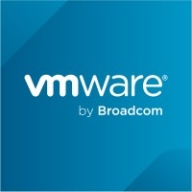

VMware Aria Operations for Applications and Apica are leading application performance monitoring solutions. VMware Aria Operations has strong user support, while Apica's comprehensive monitoring gives it a slight edge in functionality.
Features:VMware Aria Operations for Applications provides advanced monitoring tools, customizable dashboards, and efficient user support. Apica offers extensive monitoring reach, detailed analytics, and a comprehensive feature set.
Room for Improvement:VMware Aria Operations could benefit from improved integration with third-party tools, enhanced analytics, and better user interface design. Apica users noted a steep learning curve, a need for streamlined reporting features, and a more intuitive user experience.
Ease of Deployment and Customer Service:VMware Aria Operations is praised for its relatively straightforward deployment process and responsive customer service. Apica’s deployment is seen as more complex, and although its customer service is effective, it is often considered less responsive.
Pricing and ROI:VMware Aria Operations offers competitive pricing and a positive ROI. Apica is higher-priced but justified by its extensive feature set, making VMware Aria Operations more cost-effective. Specific pricing information is not available.
| Product | Market Share (%) |
|---|---|
| Apica | 0.6% |
| VMware Aria Operations for Applications | 1.2% |
| Other | 98.2% |
| Company Size | Count |
|---|---|
| Small Business | 4 |
| Midsize Enterprise | 2 |
| Large Enterprise | 17 |
| Company Size | Count |
|---|---|
| Small Business | 4 |
| Midsize Enterprise | 1 |
| Large Enterprise | 10 |
Apica leads in observability cost optimization, empowering IT teams to manage telemetry data economics efficiently. It supports various data types, reducing costs by 40% with flexible deployment options and eliminating tool sprawl through modular solutions.
Apica Ascent optimizes observability costs across metrics, logs, traces, and events and provides adaptability beyond proprietary formats. Its patented InstaStore™ technology ensures maximum storage efficiency and advanced root cause analysis. Organizations leverage Apica for comprehensive control over observability investments, reducing runaway costs. With solutions for mitigating high-cardinality data challenges, Apica supports any data lake preference and offers cloud or on-premises deployments. Its modular solutions eliminate unnecessary tool redundancies, enhancing economic efficiency in telemetry data management.
What features define Apica's capabilities?Apica addresses industry needs in monitoring and testing applications, enhancing user experience across sectors. It is instrumental in synthetic checks, load testing, API monitoring, and validating functionalities for stability in gaming, finance, eCommerce, and banking platforms. Apica's versatility supports both on-premises and cloud environments, ensuring accurate insights into service availability and network performance.
VMware Tanzu Observability by Wavefront is a powerful tool for monitoring and analyzing the performance and availability of applications and infrastructure in real-time.
With its comprehensive monitoring capabilities, visualizing and analyzing data becomes effortless. The real-time alerting system ensures timely issue resolution, while scalability and a user-friendly interface provide a seamless experience for smooth operations.
We monitor all Application Performance Monitoring (APM) and Observability reviews to prevent fraudulent reviews and keep review quality high. We do not post reviews by company employees or direct competitors. We validate each review for authenticity via cross-reference with LinkedIn, and personal follow-up with the reviewer when necessary.